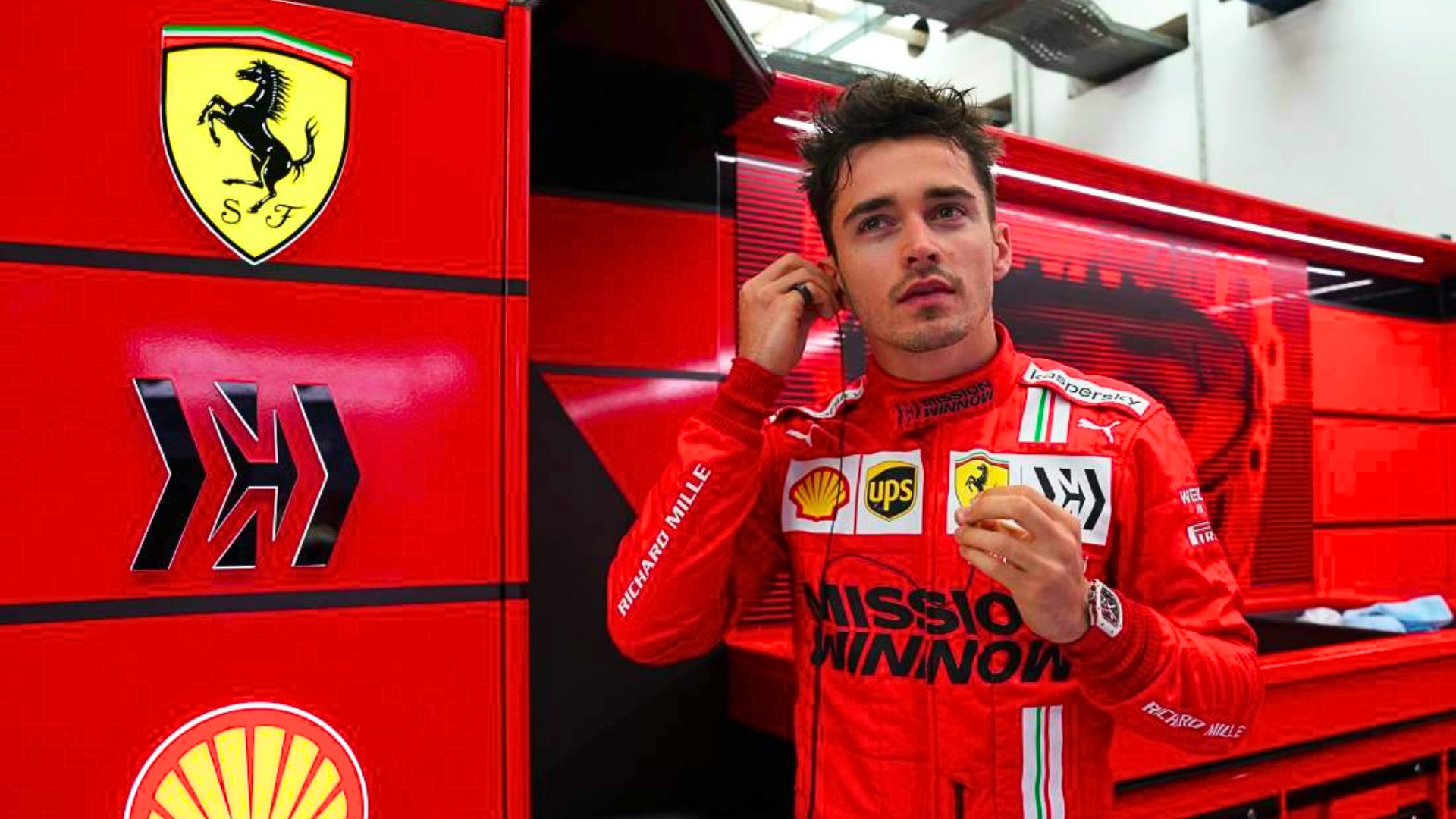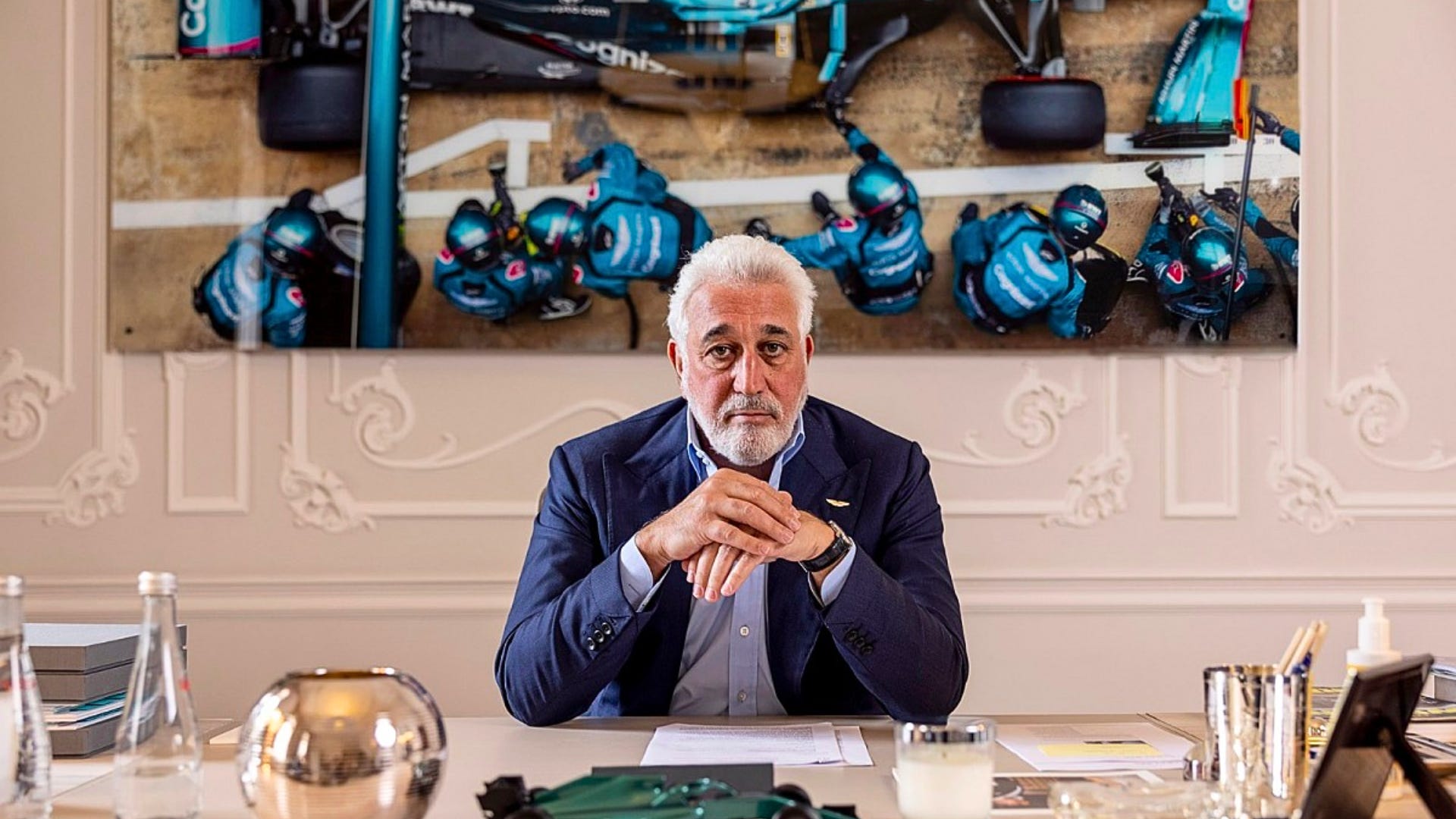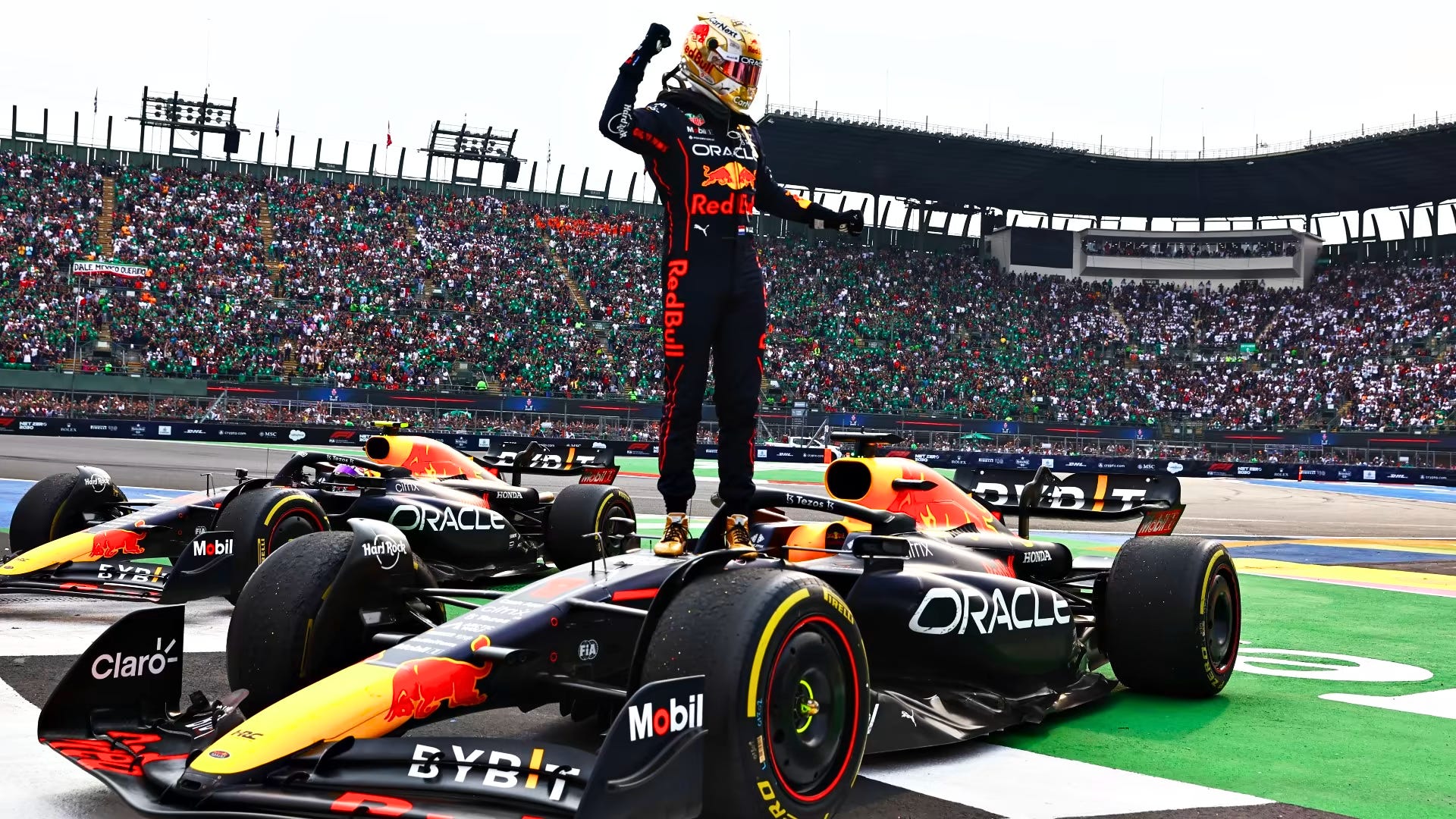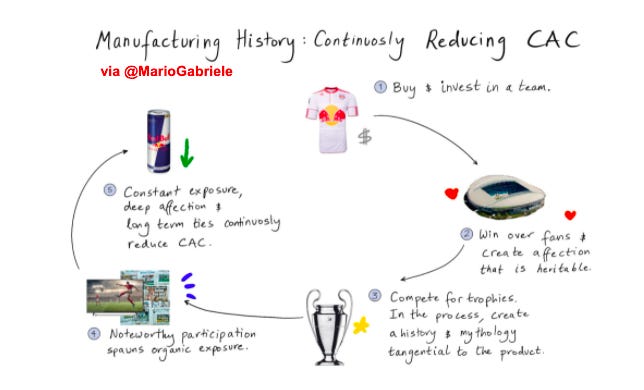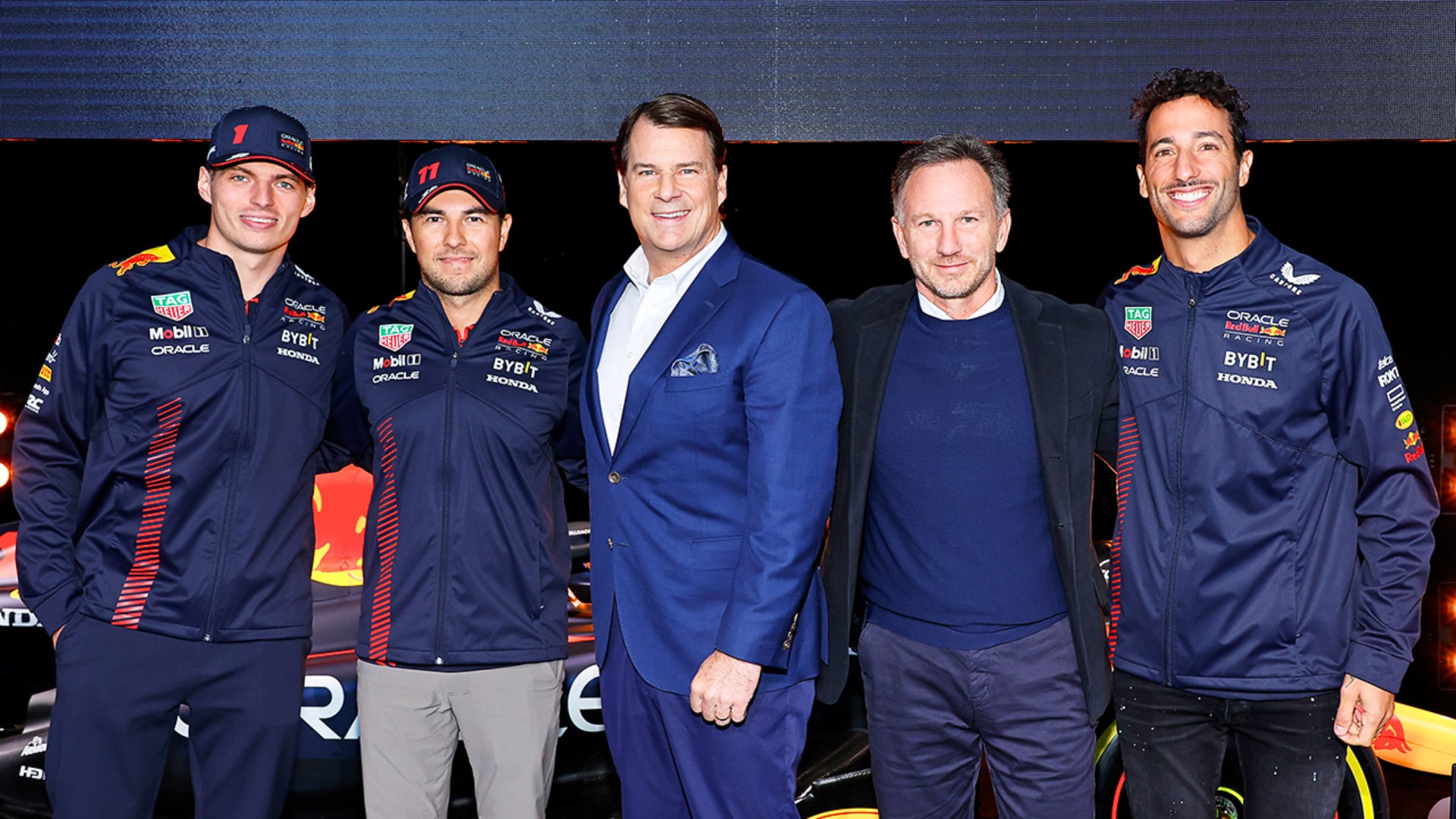How Brands Leverage Formula 1 To Make Billions
Huddle Up is a 3x weekly newsletter that breaks down the business and money behind sports. If you are not already a subscriber, sign up and join 100,000+ others who receive it directly in their inbox each week. Today At A Glance:Formula 1 is one of the world’s fastest-growing sports. The business was purchased by Liberty Media in 2016 for $4.4 billion, and they are now doing nearly $3 billion in annual revenue alone. But rather than talk about Liberty Media specifically, today’s newsletter showcases how some of the sport’s most prominent brands are leveraging the sport’s 1.5 billion viewers to build multi-billion-dollar businesses. This newsletter is also available via podcast on Apple or Spotify. Enjoy! This Newsletter is Sponsored By ButcherBox!I’ve been ordering from ButcherBox for a few years now, and it’s the single best solution I’ve found to save time while guaranteeing the quality of your food. ButcherBox delivers 100% grass-fed grass-finished beef, free-range, organic chicken, humanely raised pork, and wild-caught seafood directly to your doorstep. Yes, it’s literally that easy — and it tastes incredible! So ditch the butcher lines today and guarantee the freshness of your meat with ButcherBox. And here’s the best part: If you sign up today, ButcherBox is offering all Huddle Up readers 2 lbs of ground beef for FREE every time they order over the next year. So sign up using the link below, and everyone in your household will thank you later. Friends, Professional sports are one of the world’s best marketing vehicles. It’s why sports betting companies like Caesars, DraftKings, and FanDuel collectively pay the NFL $1 billion. Or why YouTube TV recently signed presenting sponsorship deals for the NBA Finals and MLB World Series. And also why Adidas recently signed a six-year, $830 million sponsorship extension with MLS. Sponsorship Revenue By US Sports League (2022)
These deals are mutually beneficial; brands provide sports leagues with capital in exchange for the opportunity to build brand awareness and reach new customers. And even though the top US sports leagues collectively bring in several billion dollars in sponsorship revenue each year, the best example in sports is still Formula 1. “Win on Sunday, sell on Monday” is a common phrase at the race track. And with Formula 1 averaging 77 million viewers per race (i.e., 23+ Super Bowls a year), brands have spent more than $30 billion advertising on the sport since 2005. So today’s newsletter will explore some of the best examples, including how engine manufacturers use the sport to sell more cars and why consumer brands like Red Bull “manufacture history” to reduce customer acquisition costs and build brand loyalty. Ferrari’s Mega-Capitalization Of Formula 1The best example of brand building through Formula 1 is Ferrari. Ferrari’s brand and fanbase are so strong and iconic that Formula 1 reportedly pays the automaker $35 million annually simply due to its historical significance in F1 racing. Enzo Ferrari literally built the brand in Formula 1, as he only started manufacturing sportscars to fund the Ferrari racing team. And the prancing horses are the oldest and most successful Formula 1 team, competing in every world championship since 1950 while also winning 15 Drivers Championships and 16 Constructors Championships. This on-track success has helped Ferrari build a huge fanbase. Ferrari says its F1 team has 80 million fans worldwide, with 84% of Italian motorsport fans supporting Ferrari — compared to just 17% for Alfa Romeo (the only other F1 Italian automaker). And Ferrari uses this fanbase as leverage to sell cars. For example, Ferrari finished 2nd in the Constructor Standings last year, and its drivers Charles Leclerc (2nd) and Carlos Sainz (5th) both finished in the Top 5 of the Driver Standings. This helped Ferrari post a record year, shipping 13,221 cars (+18.5% YoY), bringing in $5.5 billion in revenue (+19.3% YoY), and taking home an operating profit of $1.02 billion (+12% YoY). And the result? A 67% increase in the company’s stock price over the last 12 months. Ferrari’s 2022 Financial Overview
But Ferrari isn’t just focused on cars. The brand brought in $523 million in sponsorship and commercial revenue last year alone (+11% YoY), and they now own 15 brick-and-mortar stores globally, selling hundreds of millions of dollars in clothing, shoes, watches, jewelry, eyewear, luggage, and more. Lawrence Stroll’s Master Plan With Aston MartinWhen Lawrence Stroll purchased Formula 1 racing team Force India a few years ago, many people thought he was just guaranteeing his son a long-term seat in F1. I mean, it makes sense, right? Stroll had already spent more than $100 million to get his son into Formula 1, buying the Prema F3 team and traveling with a staff of 20 people (+ engineers) to tracks around the world (Silverstone, Hungary, Monza, Austria, Barcelona, Abu Dhabi, Austin, and Sochi) so that his son could gain experience. But that’s only half the story because Lawrence Stroll later invested $235 million for a controlling stake in Aston Martin. He then rebranded the Force India team as the Aston Martin Team, marking the brand’s return to Formula One after 60 years. Stroll’s plan was simple: Use F1 as a marketing platform to sell cars. And similar to Ferrari, Stroll is already having some success. He convinced Mercedes F1 team principal Toto Wolff to spend $22 million on a 1% stake in the business last year. Aston Martin then signed a technology-sharing agreement with Mercedes and hired the Head of Mercedes AMG (Tobias Moers) as their new CEO. This led to better on-track performance — Fernando Alonso currently sits third in the F1 Driver Standings — and the parent company is also selling more cars. For example, Lawrence Stroll was at a Financial Times event in May 2023, and he mentioned two interesting stats:
One could argue that attribution on car sales is tricky, and maybe Lawrence Stroll is embellishing a bit. But regardless, F1 seems to be positively impacting Stroll’s quest to turn around the Aston Martin brand. Mercedes Gets 25% Of TV Time When They Are GoodThe Mercedes Formula 1 team dominated most of the 2010s, winning eight consecutive Constructor Championships from 2014 to 2021. This resulted in massive exposure for the brand, with Mercedes’ parent company Daimler AG even mentioning in its annual shareholder report that the Mercedes F1 team averaged about 25% of total TV share during F1 races (aka the car was on screen). And this exposure has helped the Mercedes brand double in value over the last decade. Mercedes Interbrand Rankings (2013-2022)
The Mercedes F1 team has also seen its workforce increase from 650 employees in 2013 to more than 1,000 employees today. They now bring in annual revenues of more than $450 million, up from $196 million in 2013, and the introduction of the cost cap has helped Mercedes expand its profits from $15 million in 2020 to $75 million today. And it’s not just the team benefitting either. Lewis Hamilton, for instance, earned $65 million last year and was ranked as the world’s 21st richest athlete, according to Forbes. Most of that money ($55 million) comes from his F1 contract. But he also makes $10 million annually from sponsors like Bose, Electronic Arts, Mercedes-Benz, Monster Energy, Police, Puma, and Tommy Hilfiger. And he also started building an impressive investment portfolio, including investments in Athletic Greens, TMRW Sports, and the Denver Broncos. Red Bull Uses F1 To “Manufacture History”So we all know the saying by now: Red Bull isn’t an energy drink company; it’s a marketing company. And Formula 1 is at the core of its marketing strategy. For those that don’t already know, Red Bull spends 35% of its annual budget on marketing to differentiate its brand, and they simply outsource the production of its non-proprietary energy drink formula to an Austrian bottler called Rauch. Some of this money is spent on attention-grabbing stunts, like building a skate park 2,000 feet in the air. But most of the money is spent on their portfolio of owned and operated sports teams. It’s a strategy that Mario Gabriele calls “Manufacturing History.” And while Red Bull owns and operates several soccer, hockey, surfing, sailing, and MotoGP teams, their most significant investment (by far) is with Formula 1. Red Bull cofounder Dietrich Mateschitz purchased the Jaguar F1 team for $1 in 2004 and agreed to invest hundreds of millions in the team over the next three years. Mateschitz then renamed the team Red Bull Racing, and the rest is history. Red Bull has invested $2.3 billion into Red Bull Racing, creating $300 million in annual brand exposure. That means they have generated more than $5 billion in annual exposure since owning the team, securing a 2x return on their total investment. And don’t forget, Red Bull Racing recently signed a $300 million deal with Oracle to rename the team “Red Bull Oracle Racing,” and they are also trying to run the same playbook with their sister team, Scuderia AlphaTauri, which benefits the Red Bull fashion label, AlphaTauri. Ford’s Formula 1 Plan Involves Beating TeslaFord previously owned Jaguar before selling the business in 2008, so they technically owned the F1 team that Red Bull purchased for $1 back in 2004. But now Ford is returning to the sport — and teaming up with Red Bull again. The car manufacturer will work with Red Bull Powertrains to develop the next-gen hybrid power units required as part of F1’s new Power Unit Regulations that start in 2026. Ford will help supply engines to both Oracle Red Bull Racing and Scuderia AlphaTauri. And the company’s plan is simple: use F1 to sell EVs. “Besides the ability to research electric drive systems, the growing American audience is a key reason Ford decided to get back into the sport, Farley said in an interview with CNN. “Both the tech transfer and the marketing,” he said. “It’s a great time to turn a whole new generation of Americans on to these Ford EVs.” And with Ford currently ranking a distant second to Tesla (TSLA) in electric vehicle sales, Farley believes Formula 1 could help them close the gap. And last but not least, it’s not just car manufacturers, teams, and drivers benefiting from the growth of Formula 1: Liberty Media is also benefitting. Formula 1 has global marketing partners, like Heineken ($50 million per year) and Rolex ($45 million per year), that have collectively paid Formula 1 more than $30 billion over the last 15 years. And with sponsorships now representing 16.9% of F1’s $2.107 billion in annual revenue ($356M), the company’s stock is up 275% since 2016. So the bottom line is clear: F1 attracts millions of viewers each weekend, and the world’s most prominent brands are leveraging those eyeballs to build big businesses. If you enjoyed this breakdown, please consider sharing it with your friends. My team and I work hard to consistently create quality content, and every new subscriber helps. I hope everyone has a great weekend. We’ll talk on Monday. Listen to the Joe Pomp Show on Apple or Spotify. Interested in advertising with Huddle Up? Email me. Your feedback helps me improve Huddle Up. How did you like today’s post? Loved | Great | Good | Meh | Bad Want More Detailed Sports Business Breakdowns? Subscribe To JPS.The Joe Pomp Show is a 3x weekly podcast where I break down the business and money behind sports. Think of it as the same high-quality work you read here, just deeper. There are also exclusive interviews with people like Dana White, Lance Armstrong, and Troy Aikman, and you’re guaranteed to learn something. Huddle Up is a 3x weekly newsletter that breaks down the business and money behind sports. If you are not already a subscriber, sign up and join 100,000+ others who receive it directly in their inbox each week.
© 2023 |


